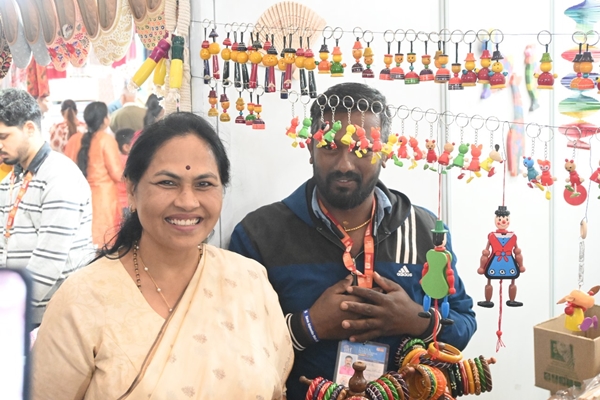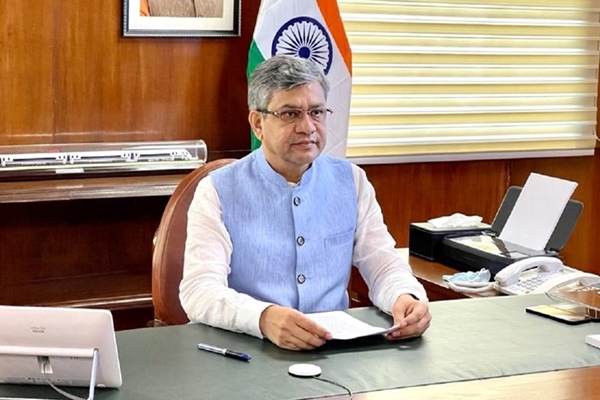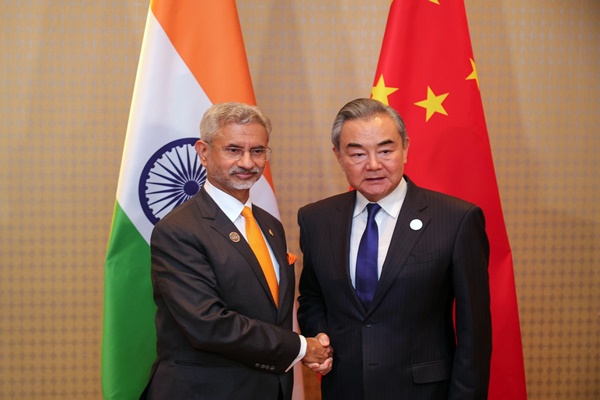
By Muhammad Shaghil Ansari
Recently Narendra Modi took oath as the Prime Minister of India and formed his government for the third successive term. In the recently concluded general elections the people of India did not give Bharatiya Janata Party full majority to form the government but somehow, the coalition led by the BJP, the National Democratic Alliance managed to stay in power for the third consecutive time. For the first time since 1962 a government has returned for the third time after completion of two consecutive terms.
The NDA secured 293 seats in the general election 2024, in which 240 seats have been reserved by the BJP alone. On the other hand, the INDIA alliance, a formidable multi-party coalition bags 232 seats, created a beleaguered situation for the BJP to alone form the Government. There is a return of coalition government with the NDA coming in power after 10 years of de facto one-party rule.
The website of the UK parliament defines Coalition government as a Government formed jointly by more than one political party. Parties can decide to form a coalition government if there is a situation of hung parliament where no single party has a clear majority in the House of Commons, in India the Lok Sabha following the general elections. It means power sharing between various parties to form a single government. It is most commonly believed that the coalition government is always supportive of the federal form of government or the constitution and sometimes also gives more opportunity for expression of ideas or democratic rights to regional and small parties. It can be said that the coalition government in its best possible way promotes democracy and regional administration.
The dawn of Coalition government in India
From the time of independence, our country has only seen the rule of only one party, the Congress party. For a very long time the congress party maintained its domination in the centre as well as the state government, the idea of forming a coalition government for the very first time was introduced in 1967. When the congress failed to form the government in five major states West Bengal, Rajasthan, Bihar, Uttar Pradesh and Punjab. The congress was also defeated in madras by the Dravida Munnetra Kazhagam under C.N. Annadurai. For the very first time since the independence congress party won the General elections with a narrow majority of 283 seats in the Lok Sabha. Coalition governments by the name of Samyukta Vidhayak Dal (SVD) were formed in Bihar, Madras, Punjab, Odisha, Kerala and even in metropolitan Delhi. The governments formed in UP, Madhya Pradesh and Haryana were with the help of congress defectors like Chaudhary Charan Singh, Govind Narain Singh and Rao Birender Singh respectively. All these coalition governments were created with an anti-congress ideology, with an aim to keep the dominant party out of power in these states. Although the life span of all these coalition governments was very short, it created a platform for all the opposition parties to take over the Congress party. This created a Grand Alliance of all the Opposition parties against then Congress leader Indira Gandhi for the General elections of 1971. Indira Gandhi led a Campaign which focused on reducing poverty, she swept to power with 352 seats defeating the Grand Alliance led by Congress (O) leader Morarji Desai.
The rise of Janata Party
The Total revolution led by JP Narayan and its supporters from all over the country led a mass protest against the government led by Indira Gandhi. They protested against the government’s failure to curb the inflation, high unemployment rates and shortage in supplies of necessities. They advocated a programme of social transformation by participation of youth in social activities. Things took a great turn when the Allahabad High Court passed a judgement declaring the election of then Prime Minister Indira Gandhi as null & void and disqualified her as a member of parliament. She was found guilty of using the government machinery while conducting the election campaign. Later, the Supreme court overturned the conviction order of Allahabad High Court, which was followed by a series of Protest by JP and his followers in Pragati maidan Delhi. On 25th June 1975 President Fakhruddin Ali Ahmad declared a state of emergency upon the cabinet of minister’s advice. This led to widespread rage in society, civil liberties and fundamental rights were abolished. Various opposition leaders were put in jail. By the time the emergency was lifted next general elections were being conducted in 1977, only this time all the opposition parties like Bhartiya Jana Sangha, Congress(o), Swatantra Party and Bharatiya Lok Dal formed a coalition alliance by assimilating themselves into the Janata Party. It came into power in 1977 with a very big majority but collapsed within two years. Due to various ideological differences and lack of accountability and unity among the party members the Janata Party could not hold on to the Government formation and later on collapsed while under the prime ministership of Chaudhary Charan Singh. The Janata party set a mark in the history of Indian Politics as it was the First time a coalition of various regional and small opposition parties came together to form the government and challenged the Legacy of the Congress Party. The Elections were re-conducted in 1980, but this time Indian National Congress bags around 353 seats and Indira Gandhi was once again elected as the Prime Minister. Unfortunately, in 1984, PM Indira Gandhi was assassinated, the death of the PM created a sympathetic environment in the arena of Indian Politics which took congress to great new heights crossing the mark of 400 seats in the Election.
Rajiv Gandhi took oath as the new Prime Minister who was later cheated by his own defence minister, V.P. Singh who became a fulcrum of another alliance to defeat the Congress. In 1989 Singh became the Prime Minister with the support of BJP and the Left Party. Following the arrest of Lal Kishan Advani in the Ram Rath Yatra movement the BJP withdrew its support, Sigh’s government fell after one year. In his place for a very short time Chandra Shekhar became the PM with the support of the congress.
After the Chandra Shekhar government fell congress led a minority government under P.V. Narsimha Rao for a term of five years from 1991 to 1996. During this time the BJP began to gain support of the masses and was becoming very popular with its Hindutva ideology. Atal Bihari Vajpayee, a moderate politician was their PM candidate who formed a coalition government in 1996 which only lasted for 13 days. The BJP secured 161 seats and emerged as the single largest party, but apart from Shiv Sena, Haryana Vikas party and Samata Party it could not gain support of any other party because of which the government fell as Vajpayee was not able to prove its majority.
The United Front
The United Front was a coalition of 13 political parties formed after the general elections of 1996, it formed two governments between 1996 and 1998 under the leadership of two prime ministers belonging to the Janata Dal- H.D. Deva Gowda and I.K. Gujral. Deva Gowda formed the government with the support of Congress(I) party in order to prevent the BJP from coming to power. Later on, in April 1997 Congress withdrew its support for the coalition, the reason being that although Gowda’s government was dependent upon the support of the Congress party, the prime minister did not consult the party even in important matters, therefore Gowda lost a no-confidence motion in Lok Sabha. The minister of External Affairs, Inder Kumar Gujral was now the new leader chosen to lead the coalition. This time too the Congress withdrew its support in November 1998, and Gujral resigned. The United Front government outlined a Common Minimum Programme (CMP) which kept secularism as its major guiding principle. The CMP also made it very clear that its main aim is to keep the BJP out of power. The leaders often brought the Ayodhya Dispute in the public domain and they believed that it should be solved by referring to the Supreme Court, under article 138(2) of the Indian Constitution, which always advocated unity among the Indian Citizenry. Additionally, the United Front focused on various aspects of strengthening the Federal structure, social justice system and advocated the empowerment of the marginalized sections.
The Formation of NDA
In the 1998 election the BJP took over the Congress party and with the support of various regional parties the National Democratic Alliance formed the Government with Atal Bihari Vajpayee as its Prime Minister. The various regional parties like Trinamool Congress, AIADMK, Biju Janata Dal (BJP), Shiv Sena a total of 23 parties who gave support to the NDA, not all of them share the Hindutva ideology, they projected themselves a secular and successfully procured votes from the Muslim population as well. The alliance faced a major crisis when Jayalalithaa withdrew her support of AIADMK from the alliance, the NDA lost its majority, President K.R. Narayan dissolved the parliament and in 1999 fresh elections were conducted. The NDA won a decisive majority with its new constituents such as Janata Dal (United) and DMK. The BJP secured 182 seats and with the extended support of the coalition parties the NDA tally crossed the mark of 300 seats. The NDA government with Vajpayee’s assistance returned to power. The Common Minimum Programme remained as it was before and the Hindutva issues were kept out of the public domain.
The General Elections Of 2004 and 2009 and the UPA coalition
The NDA government’s tenure ended in 2004, this time the Congress party secured 143 seats just 5 seats more than the BJP. Congress along with the coalition of RJD, DMK, NCP and many more parties called the United Progressive Alliance (UPA) was on 225 seats while the NDA secured only 189 seats, later when the left parties extended their support to the UPA government, the Congress Party resurrected. The party president Sona Gandhi turned down the PM post and Dr. Manmohan Singh became the first non-Hindu Prime Minister of India.
In the 2009 Lok Sabha election the Congress secured around 205 seats. Manmohan Singh was re-elected as the PM even though the Left withdrew its support over the Indo-US civil nuclear deal. The Alliance once again managed to form the Government providing external support to parties like Samajwadi party, Bahujan Samaj Party, Janata Dal (United) and other minor parties. Along with this the UPA managed to form a government in state legislative assemblies of Andhra Pradesh, Kerala, Uttar Pradesh, West Bengal, Maharashtra, Rajasthan and Tamil Nadu. However, there were several allegations of scam on the alliance which affected the image of the UPA and started a domino effect of alliance leaders leaving the UPA and forming their own parties or colliding with the opposition. As a result, the alliance suffered a major defeat as it won only 60 seats in the General election of 2014, which started the Era of the BJP dominance as it alone managed to form the government with prime minister Narendra Modi as their leader. Again, in the Elections of 2019 the BJP alone crossed the mark of 300 and secured 303 seats, NDA again coming in power with a total of 353 seats.
Over the Last ten years India saw the dominance of one party which now came to an end with the BJP winning only 240 seats and unable to cross the majority target of 272 seats, but prime minister Modi has been elected once again as the NDA and partners has successfully crossed the tally of 272 securing 293 seats in Lok Sabha Election 2024, despite the great opposition from the INDIA. The INDIA led by the Indian National Congress who secured only 234 seats unable to form the government, while president of INC Mallikarjun Kharge said that “it is a huge political loss for Modi personally apart from being a clear moral defeat as well”. For the first time since last ten years Lok Sabha will be having a leader of opposition.
The Modi government formed in 2024 is weaker than its last term, having failed unexpectedly to secure a majority in Lok Sabha, it lost around 62 seats from its previous tally achieved in 2019 (303) falling short of around 32 seats of a majority, but with the support of the coalition it provided an additional 53 seats, but now it also has to rely upon the support of its members while legislating upon various matters of national importance. The new addition of Nitish Kumar and N. Chandrababu Naidu’s party in the NDA and along with other member parties will extract their pound of flesh, they will have a major impact not only in policymaking but also on the cabinet composition. Unlike earlier the BJP was dictating its terms unilaterally, Modi as a leader has not had to rely upon any alliance partner since the start and it is not clear how easily he would cope.
Congress leader Rahul Gandhi has also mentioned in an interview in which he had described the numbers of Lok Sabha as “very fragile” providing a hint that any small disturbance within the alliance can topple the Government. Various political commentators also believe that Modi is not known as a consensual figure so it will be very interesting to see how the third time elected as Prime Minister, Modi will face the challenges of the coalition Government. Will he be successful like earlier NDA leaders, like Atal Bihari Vajpayee while leading a coalition of parties for the first time under his premiership or the Modi 3.0 government may get prone to instability?
Muhammad Shaghil Ansari is 2nd year B.A.L.L.B Student of Jamia Millia Islamia




